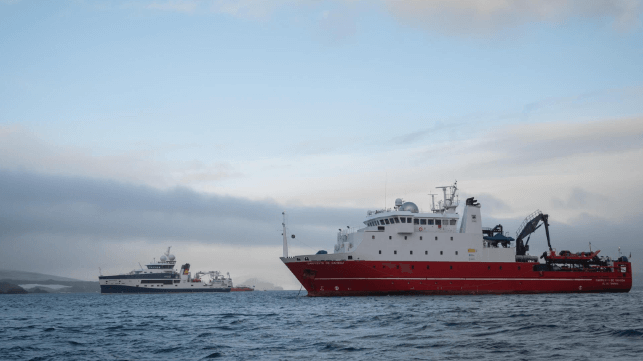Spanish Expedition Finds Evidence for Methane Leaks in Antarctica

A team of Spanish scientists have revealed alarming evidence of methane leaks in Antarctica. The researchers are exploring the vast quantities of methane stored in the Antarctic seabed. The study, carried on board the Spanish research vessel Sarmiento de Gamboa, focused on the Pacific margin of the Antarctic Peninsula. These Antarctic edges are one of the most rapidly warming parts of the planet.
“We have estimated that in this area there are some 24 gigatons of carbon accumulated in methane hydrates, an amount equivalent to what all humanity emits in two years,” said geologist Rogers Urgeles, who together with Ricardo León led the expedition.
For decades now, polar scientists have been studying methane hydrates - a mixture of water and methane gas trapped under high pressure - in the frozen continents. The methane hydrates are as a result of decomposition of organic matter buried for over 20,000 years beneath the polar seas; most of this research has focused on the Arctic.
The first active leak of methane from the Antarctic sea floor was confirmed by researchers in 2020. While additional data is needed to understand the methane seepage, there have been reports showing global warming could be a factor. However, the first leak was confirmed near the Ross Sea, a region which is yet to significantly warm. But tracking of these methane leaks is critical for climate models, which currently do not account for it. Methane in the atmosphere is considered roughly 20 times more potent than CO2 as a greenhouse gas.
The new study by the Spanish scientists further confirms the presence of huge methane hydrate reserves in the Antarctic Peninsula. Ongoing geological and climate-driven processes have made the reserves destabilize, causing seepage of methane. León and Urgeles reported observing columns of methane in the ocean up to 700 meters long and 70 meters wide. The gas could be bubbling up from the subsoil, often through mud volcanoes hundreds of meters above the seabed, the scientists told the Spanish Newspaper El Pais. The observed methane columns dissolve at about 150 meters from the ocean surface. The researchers recommend long-term monitoring to track methane release trends in the Antarctic, as well as the amount that escapes into the atmosphere.
